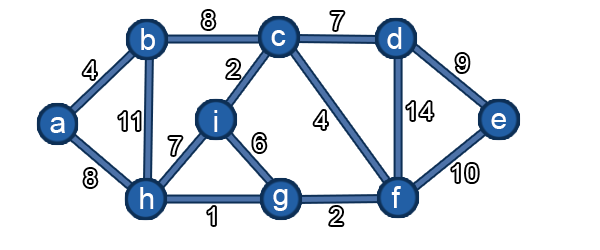A problem that often appears in various guises is connecting different "points" in an "equivalent" way, for example connecting them with threads but without creating loops.
Another typical problem is to calculate the shortest route in a map point to point.
There are several algorithms capable of solving these known problems as the "Minimum Spanning Tree".
The purpose of this project is to implement Prim's algorithm for the solution of the MST problem for non-directed and connected graphs with non-negative weights.
To proceed with the implementation of these algorithms it is necessary produce an implementation of a MINHEAP (or MIN-PRIORITY-QUEUE). (We couldn't use default library for heap data structure and had to produce it ourselves)
My solution to the problem strives to maximize memory and time efficiency and at the same time fulfill assignment's specifications.
An example of this is the structure I built for storing arc data. By avoiding storing arcs in hash-tables with key (graph-id v1 v2) and as value its Weight I tried to find a more efficient way to store data.
Arcs data in my program are stored in nested-hash-tables structures to drastically improve efficiency in searching operations. Moreover this choice also avoids increasing execution times caused by multiple graphs existing simultaneously.
The downside to this implementation is that a "double" representation for arcs is inevitable. Moreover a temporary hash-table is needed to avoid double-arc output in functions graph-arcs and graph-print.
graphs hash-table is optional since all graphs are also stored in first "layer" as entry-point keys for the nested hash-tables structure in arcs. I kept it just in case it was needed for unit-tests for the uni project.
This program outputs a Minimum Spanning tree for a given graph.
Before any operation can be done you need to have a graph to work on. You can create a graph by adding arcs with function:
(new-arc graph-name vertex1 vertex2 weight)vertex1 and vertex2 must be atoms. weight must be a positive number.
If not existent vertices and graph will be created along with arc. Weight is optional and will be 1 if not specified. For more control over graphs creation you can use functions new_graph and new_vertex. As new_arc, new_vertex will create the graph if it doesn't exists.
(new-graph graph-name)
(new-vertex graph-name vertex-name)You can also load a graph by providing a lisp file (I know it's a terrible way to pass data, unfortunately a csv loading function was not requested as for Prolog version)
(load "path-to/graph-name.lisp") A graph file example is provided within graphs folder.
To debug a state of any graph you may print it:
(graph-print graph-name)MST will be given as a list of arcs obtained by pre-order visiting the MST with radix source (vertex-name) and sorted first by weight and then by lexicographical order for nodes on same depth. Source is the starting vertex of computation.
(mst-prim graph-name source)
(mst-get graph-name source)When a graph is no more needed, you may delete it with function:
(delete-graph graph-name)This will delete delete everything related to the graph in memory.
If you want more hierarchical informations on a MST arc-list you can get the not-flattened arc list with mst-get-nested function. It returns a pre-ordered list of nested arcs representing the MST.
(mst-get-nested graph-name source)OA: https://github.com/PhantoNull
Feel free to use under MIT license.

